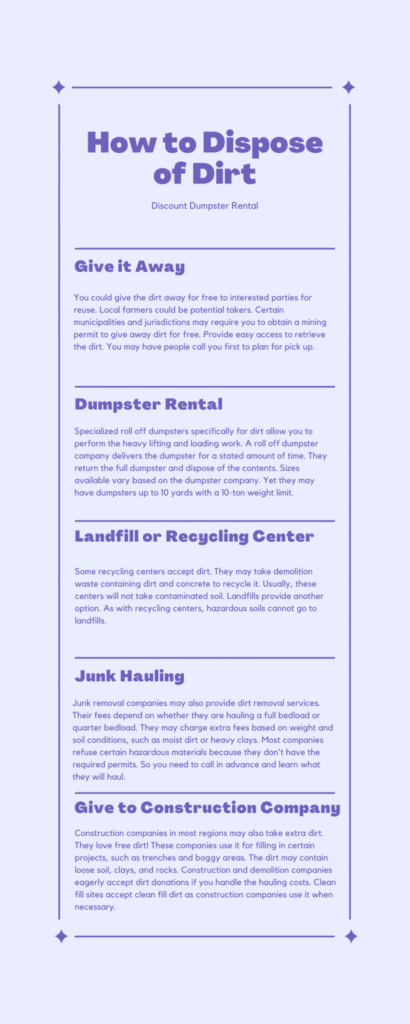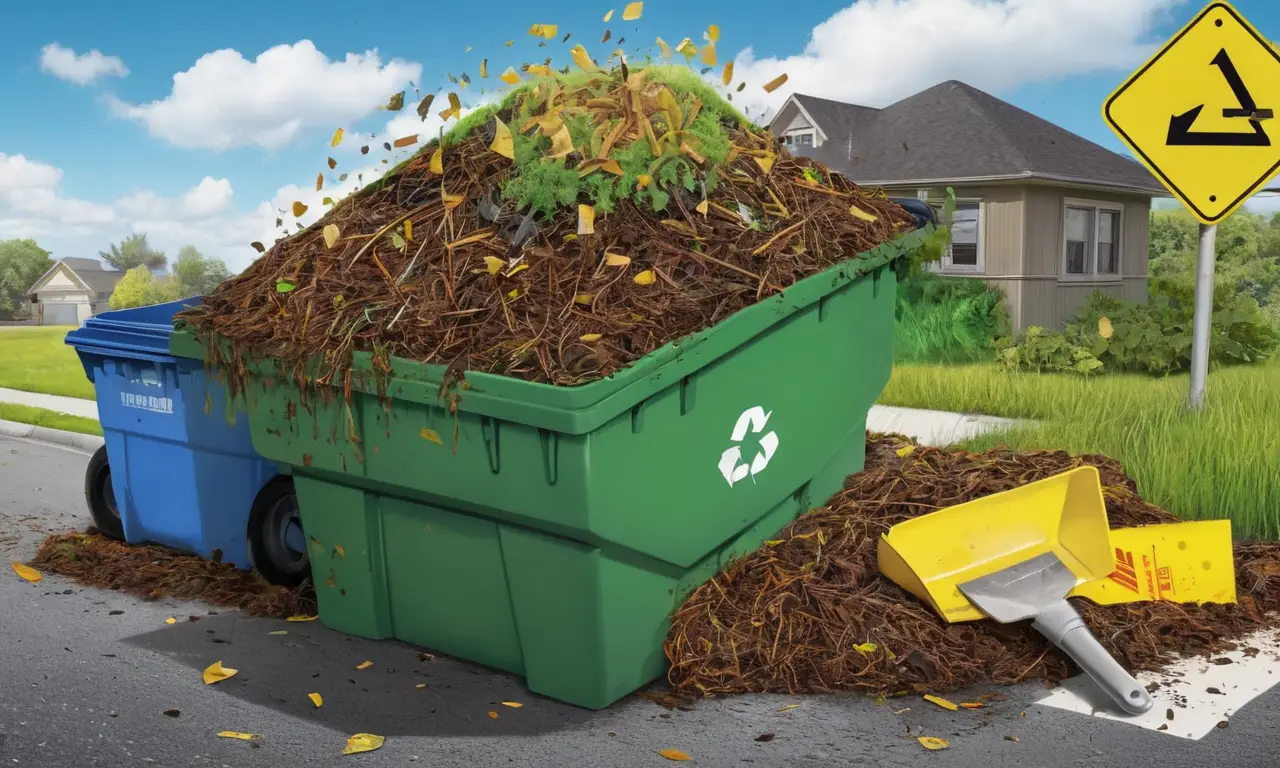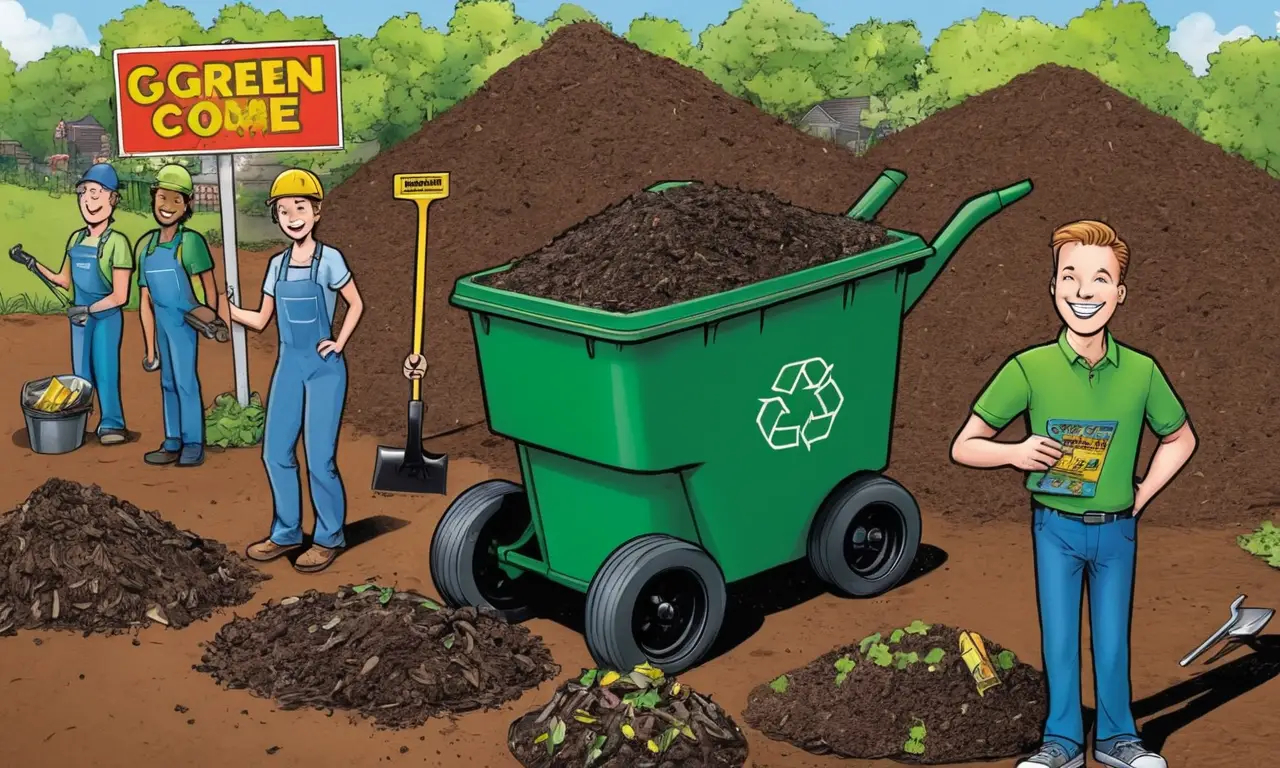
Dealing with excess dirt can be a common household or construction project dilemma. Whether you’re finishing landscaping, renovating your home, or simply cleaning up your yard, knowing the proper way to dispose of dirt is crucial. While it might seem straightforward, there are specific guidelines and regulations that vary depending on your location and the type of dirt you have.
This article will guide you through the different options for disposing of dirt, emphasizing the importance of adhering to local waste management regulations. We’ll explore the distinctions between trash disposal, yard waste bins, construction debris drop-off locations, and how to handle contaminated dirt safely and responsibly. By following these guidelines, you can ensure proper disposal while minimizing environmental impact.
Dirt Disposal Guidelines
The first step in determining the appropriate way to dispose of dirt is understanding the general guidelines. Small amounts of clean dirt from everyday activities like gardening or minor home repairs can often be disposed of in your regular trash. However, larger quantities or dirt that may be contaminated require alternative methods.
It’s important to note that local waste management regulations can vary significantly. Some municipalities have specific restrictions on the amount of dirt allowed in residential trash bins, while others may prohibit it altogether. Always check with your local waste management department for their specific guidelines and any associated fees.
Trash vs. Yard Waste Bins

For small amounts of clean dirt, your regular trash bin might be a suitable option. However, if you have a larger quantity or the dirt is from yard work, consider using your designated yard waste bin. These bins are typically collected separately from regular trash and are designed to handle organic materials like grass clippings, leaves, and garden debris.
Remember that yard waste bins often have size restrictions, so ensure your dirt volume falls within those limits. Additionally, avoid mixing yard waste with other types of garbage, as this can contaminate the entire load and lead to improper disposal.
Construction Debris Drop-Off Locations
When dealing with significant amounts of dirt generated from construction projects or major renovations, you’ll likely need to utilize designated construction debris drop-off locations. These facilities are equipped to handle larger volumes of waste materials, including dirt, concrete, wood, and metal.
Contact your local waste management department or search online for nearby construction debris drop-off sites. Be prepared to provide details about the type and quantity of dirt you have, as some facilities may have specific requirements or restrictions.
Local Waste Management Regulations

Adhering to local waste management regulations is paramount when disposing of dirt. These regulations are in place to protect public health, preserve environmental resources, and ensure efficient waste management systems.
Contact your local waste management department directly for detailed information on their specific guidelines regarding dirt disposal. They can provide you with answers to questions about permissible disposal methods, size restrictions, fees, and any necessary permits or documentation.
Contaminated Dirt Disposal
If you have dirt that is contaminated with hazardous materials such as chemicals, oil, or pesticides, it requires special handling and disposal procedures. Can you throw away dirt in the trash contaminated with hazardous substances? Absolutely not!
Contact your local waste management department or a certified hazardous waste disposal company for guidance on safely disposing of contaminated dirt. They can provide appropriate containers, transportation methods, and disposal facilities to minimize environmental risks.
Conclusion
Disposing of dirt responsibly is essential for maintaining a clean and healthy environment. By understanding the different disposal options available and adhering to local regulations, you can ensure that your dirt is handled appropriately. Remember to always check with your local waste management department for specific guidelines and any associated fees.
